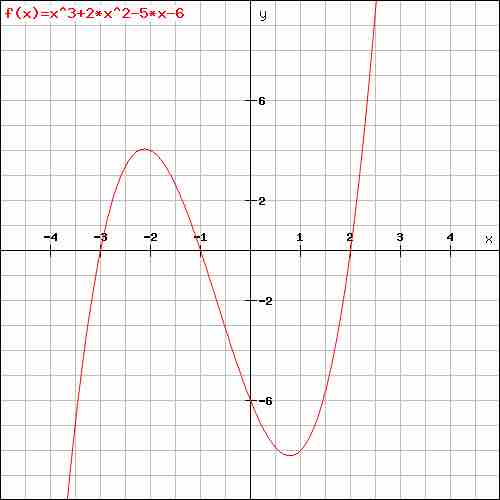The factored form of a polynomial can reveal where the function crosses the
Number of Zeros of a Polynomial
Consider the factored function:
Each value
A polynomial function may have many, one, or no zeros. All polynomial functions of positive, odd order have at least one zero (this follows from the fundamental theorem of algebra), while polynomial functions of positive, even order may not have a zero (for example
Regardless of odd or even, any polynomial of positive order can have a maximum number of zeros equal to its order. For example, a cubic function can have as many as three zeros, but no more. This is known as the fundamental theorem of algebra.
Example
Consider the function
This can be rewritten in factored form:
Replacing

Cubic function
Graph of the cubic function
Factoring and zeros
In general, we know from the remainder theorem that
It follows from the fundamental theorem of algebra and a fact called the complex conjugate root theorem, that every polynomial with real coefficients can be factorized into linear polynomials and quadratic polynomials without real roots. Thus if you have found such a factorization of a given function, you can be completely sure what the zeros of that function are.